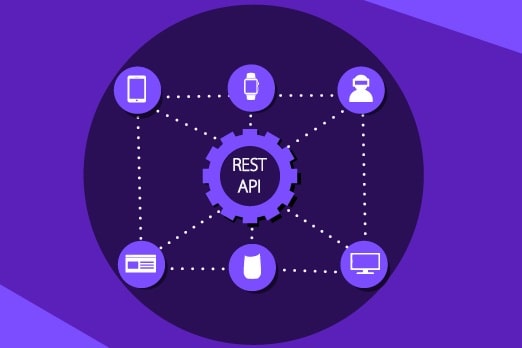How to Successfully Design Your REST API
Today, companies that want to be leaders in their space need to participate in the digital economy — and that means leveraging APIs. And, if they’re going to make the best of their API ecosystem, they need to leverage standards and best practices for designing effective and resilient APIs. Ensuring that APIs are RESTful is a good first step — but what does that look like in practice? In this piece, we’re taking a closer look at the best practices for designing a REST API.
Table of Contents
What Is a REST API?
REST, short for Representational State Transfer, is an architectural style for APIs that abides by a specific set of constraints. This includes stateless communication and cacheable data. REST APIs are often called over HTTP, but they can also be accessed via other communication protocols. REST was first conceptualised in the early 2000s by Roy Fielding, and was put forth as a more scalable and flexible model than other machine-to-machine communication systems. Today, it is considered the leading standard for public APIs.
REST APIs operate with three key elements: a client, a server, and a resource — any form of data the server provides to the client. The client sends an HTTP request in this format, and the server provides an HTTP response with encoded data. The request and the response are self-descriptive, meaning they hold the details on how they can be interpreted and processed.
Best Practices for Successfully Designing a REST API
There are several factors that developers should keep in mind when developing RESTful APIs. Here are six best practices to help get you started.
In a RESTful architecture, resources are identified and accessed through unique URIs (Uniform Resource Identifiers) over HTTP, and the representation of these resources (such as JSON or XML) is transferred between client and server. RESTful APIs typically support operations such as GET, POST, PUT, and DELETE. It corresponds to retrieving, creating, updating, and deleting resources, respectively.
The use of REST APIs has become increasingly popular due to its simplicity, flexibility, and scalability. It enables developers to build web applications and services that can be consumed by various devices and platforms.
1. Use JSON as the format for sending and receiving data
Today, JavaScript Object Notation (JSON) has become the standard format for sending and receiving data for an API. While other mechanisms can be used to share or receive data, JSON works best with and can be decoded by multiple systems, making for a more consistent and reliable process.
2. Use nouns, not verbs, in endpoint paths
When designing a REST API, it’s important to use nouns to represent endpoint in endpoint paths. This is because HTTP already uses verbs for performing basic operations in the API (including GET, POST, PUT, DELETE), and having verbs in the API endpoint paths would make them unnecessarily long without conveying any new information.
3. Adopt logical nesting in endpoints
When designing endpoints for your REST API, grouping endpoints with associated data makes sense. This way, you can have logical connections between different related endpoints, showing their relationships, which makes it easier to sort through information and requests.

4. Use a consistent approach for returning errors
HTTP has standard status codes for errors. For example, error 400 reflects a bad request, and error 404 occurs when a resource is not found. Errors in the 500–599 range, meanwhile, are server-side errors. Using these status codes, which API users will likely have come across before, will make it less confusing if they receive an error message in response to a request.
5. Incorporate filtering, sorting, and pagination
The stores of information behind a REST API can be massive. And you don’t want all of that data to be returned in response to a request. That could slow down (and even break) your systems. Filtering can help you parse out the data needed for the request, thus reducing the impact on your server resources.
Pagination also helps by ensuring that only a few results are returned at a time rather than trying to serve up all the requested data simultaneously. Meanwhile, sorting uses information in the query string to sort the data into specific fields.
6. Leverage strong security practices
As APIs become more popular and widespread, so is the threat of cyber attackers exploiting their vulnerabilities. In fact, according to a recent Salt Security report, malicious API attack traffic grew 117% in the last year. Also, 94% of respondents in the survey indicated that they have security challenges in production APIs. As such, introducing security measures is necessary to protect the shared data and prevent a costly breach.
One way to introduce security into your REST API is by using SSL (secure sockets layer) and TLS (transport layer security) certificates. These keep internet connections secure and protect data between two systems by making the data impossible to read while in transit.
Least privileged or role-based access principles are also important in a REST API, as they ensure that only the right people have access to the right information.
Here are some more best practices for designing a successful REST API:
- Use meaningful resource URIs: Resource URIs should be meaningful and descriptive of the data. Avoid using verbs in the URI, as they violate RESTful principles.
- Use HTTP methods correctly: Use HTTP methods such as GET, POST, PUT, and DELETE correctly to perform CRUD (Create, Read, Update, Delete) operations on resources.
- Use HTTP status codes: Return appropriate HTTP status codes for each request to help the client understand the response from the server.
- Limit the number of resources returned: Implement pagination or filtering to limit the number of resources returned in each request.
- Version your APIs: Include version numbers in the URI to manage changes to the API while maintaining backward compatibility.
- Keep security in mind: Use secure protocols such as HTTPS and implement authentication and authorization mechanisms to protect sensitive data.
- Provide clear and concise documentation: Clearly document the API endpoints, parameters, responses, and error codes to make it easy for developers to use your API.

Ali Cameron is a content marketer that specializes in the cybersecurity and B2B SaaS space. Besides writing for Tripwire’s State of Security blog, she’s also written for brands including Okta, Salesforce, and Microsoft. Taking an unusual route into the world of content, Ali started her career as a management consultant at PwC where she sparked her interest in making complex concepts easy to understand. She blends this interest with a passion for storytelling, a combination that’s well suited for writing in the cybersecurity space.










